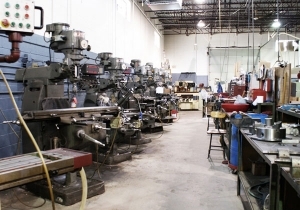
The relationship between CNC programmers and CAM (computer-aided manufacturing) software has been an intriguing one. Whereas a must-have for designing the part, CAM software’s biggest weakness has been its interface with CNC. Designing the part and actually building it in a specific CNC mill have been touted as two different jobs in machining shop in Toronto. And as a hurdle that CAM software has tried to cross for many years.
Yet, the role of the CNC programmer has not been usurped in the machining shop in Toronto.
With bigger libraries, far greater data collection (think Big Data) and machine learning algorithms, CAM software developers are hopeful of finally clearing that last stumbling block which prevents them from being the one-stop-process for all CNC milling.
Quite ironically, CAM software looks to usurp CNC programmers’ know-how and expertise not with generic and static tables, but with machine learning – the computer’s equivalent of ‘experience’. We look at how CAM software is looking to bridge this gap between design and instructing the CNC mill to bring it to life:
CAM software will increasingly overlap with CNC programming in time to come. Particularly with optimizations that can be brought to CNC milling in terms of efficiency, speed and quality, these will be welcomed by machining shops in Toronto.
There are, however, numerous functions that CNC programmers serve which are far from the capabilities of CAM software. Not least is the ability to work with different files, the expertise which comes from years of experience, the ability to judge different materials and understand the effects of CNC milling on the material itself. Losing a CNC programmer is certainly not an option for machining shops today.
This discussion wouldn’t be complete with a mention of STEP-NC, an attempt to bringing standardization to myriad machines and equally diverse file formats. A full STP-NC implementation envisages a complete bypass of CNC programming. But, it requires the machine tool be equipped with customized software, not to mention an embrace by CAM software developers – both of which are lacking at the present stage.